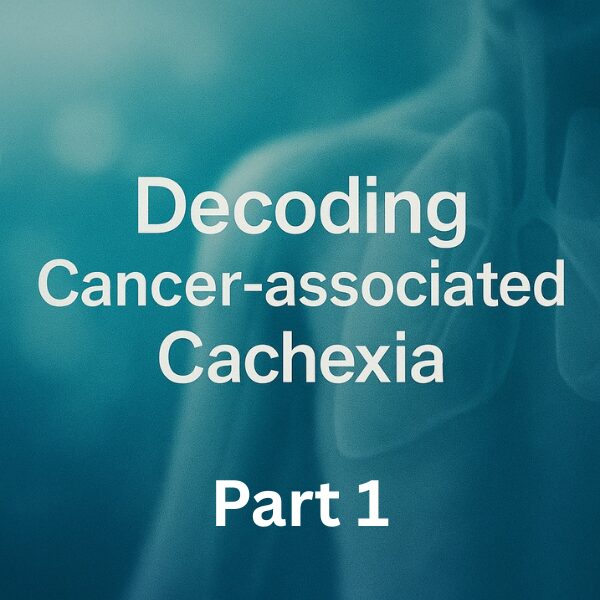Don’t Miss It — Home & Clinic Checklists + FAQs
Part 2 is a hands-on template pack. Use these copy-and-paste formats for two-week home monitoring and quick clinic checks so patients, families, and clinicians can share the same language.
Start with trends, not snapshots
For cachexia, look at two-week change, not just day-to-day noise. Track intake, activity, and function (chair stands, stairs, grip surrogate) alongside weight.
1) Home template (2-week log, 1 line/day)
Copy this into Notes/Sheets:
[Date] / [Weight kg] / [Intake % vs usual] / [Main protein eaten?] / [Activity (steps or outings)] / [Chair-stand 10 reps effort 0–10] / [Stairs effort 0–10] / [Mood 🙂|😐|🙁] / [Problems today]
“Intake %” is a rough feel (usual=100%, half=50%). If steps are hard, count outings/chores instead.
- Once weekly add-ons: Calf circumference (max), edema check (pitting on foot/ankle).
- Photo note: One meal photo/day helps visualize portion changes.
2) Home “alert signs” (review after two weeks)
- Weight: ≥ 1.0 kg loss in two weeks (despite timing/clothing adjustments)
- Intake: <50% of usual for ≥3 consecutive days
- Function: Chair-stand effort ↑ by ≥2 points or new breathlessness with one flight
- Activity: Fewer outings/chores; more daytime naps
- Symptoms: Nausea, taste/smell change, mouth sores, constipation/diarrhea, pain, fever, edema
If any apply, contact your team early—don’t wait for the next routine visit.
3) Small actions you can start today
- Small, frequent meals: Three meals plus two snacks with a protein source each time.
- Taste strategies: Cooler foods, a touch of acid, and aroma (lemon, herbs).
- Mini-resistance: Chair stands 10×2 and heel raises 20×2; skip on bad days.
- Fluids + electrolytes: Small sips through the day; ask your clinician if swelling is an issue.
4) Bring-to-clinic summary (what really helps your clinician)
[Two-week summary] • Weight: xx → xx kg (−xx kg) • Intake: average xx% of usual • Function: Chair-stand effort 2 → 5 / Breathless with 2 flights • Activity: Outings xx/wk → xx/wk; chores reduced • Symptoms: nausea(+), mouth sores(+), constipation(−), diarrhea(−) [Problems] e.g., hard to finish protein dishes; poor sleep due to cough [Requests] Dietitian/rehab referral; antiemetic/pain adjustment
- Concrete examples beat labels: “Breathless after 2 flights” is clearer than “worse stamina.”
- Show photos/logs: They speed up assessment.
5) Clinic quick-check (3–5 minutes)
- Trend scan: Weight, intake, activity, function (two-week view).
- Symptom triage: Nausea, mucositis, constipation/diarrhea, pain, somnolence.
- Simple function: Chair stands if feasible; pinch test as a grip surrogate.
- First-line support: Dietitian referral, home resistance plan, antiemetic/analgesic tuning.
- Homework: One meal photo/day; chair-stand count; weight/activity notes.
6) Quick FAQs
Should I weigh myself every day?
Yes—keep timing and conditions consistent (e.g., morning after voiding). Focus on trend over individual values. What if I can’t eat for several days?
Try small frequent meals with flavor adjustments. If it lasts ≥3 days, contact your team—IV fluids or medication changes may help. Can exercise make things worse?
Light resistance tailored to your condition is usually helpful. Rest on bad days. “Start low, go slow.” How do I choose a supplement?
Ask your clinician/dietitian. Generally prioritize protein content, palatability, and affordability for long-term use.
My Perspective
Sharing a single, lightweight format between home and clinic—“1-minute daily log × 3-minute clinic check”—materially improves decisions. Functional self-ratings (chair stands, stairs) are surprisingly reproducible and helpful for triage. Consistency beats perfection; one line a day can bring much earlier interventions and better continuity of therapy.
Next in the Series
Part 3: “Making CAC Visible — Phenotyping with CT, Function, and PROs.” We’ll put imaging, physical function, and patient-reported outcomes together for practical phenotyping.
Edited by Morningglorysciences
Related Article










Comments